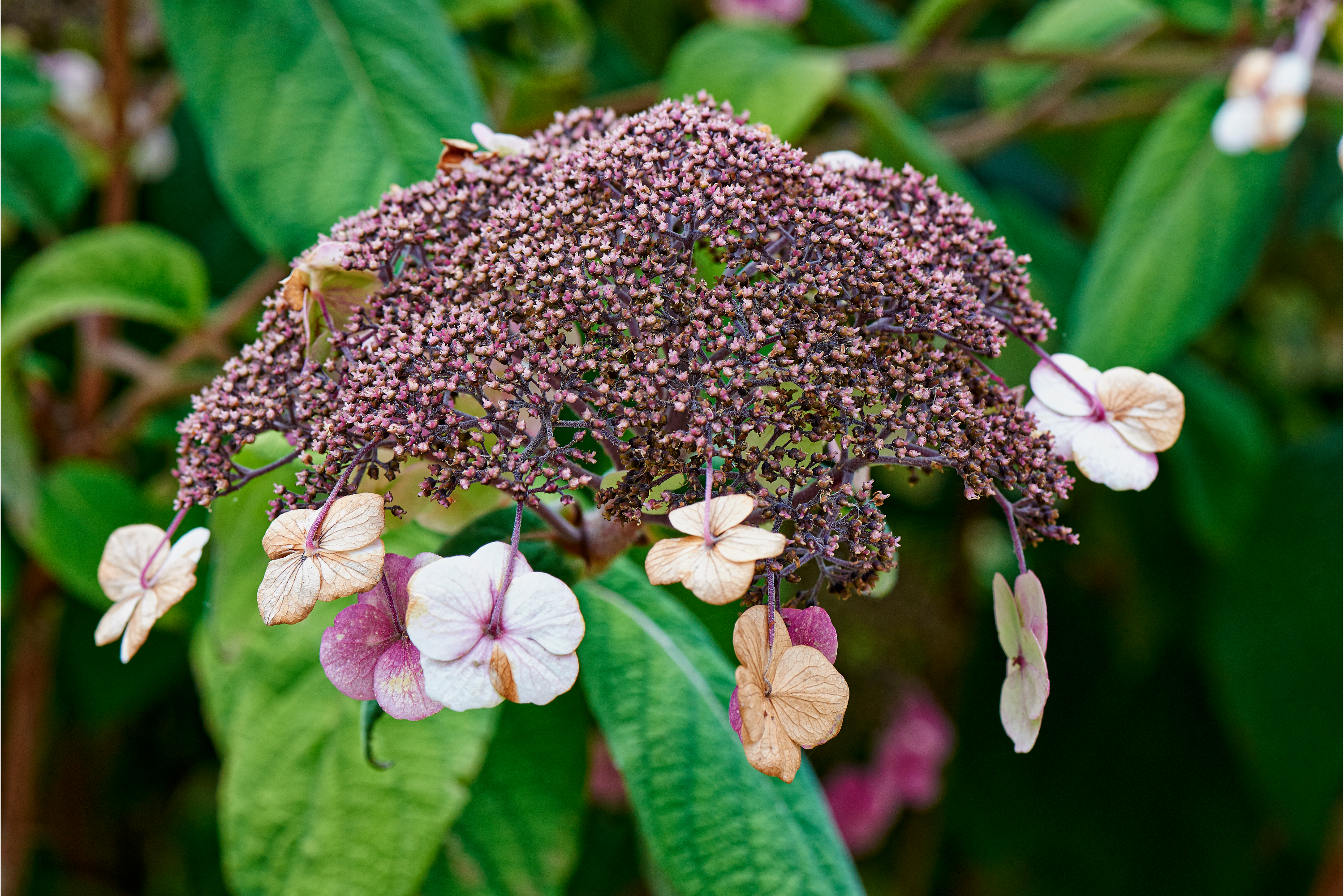Hydrangea aspera
(Hydrangea aspera)

Description
Hydrangea aspera is a deciduous shrub belonging to the family Hydrangeaceae. It is native to China, India, Nepal, Bhutan, and Myanmar, and is widely cultivated as an ornamental plant in gardens and parks all over the world. In this article, we will take an in-depth look at the various aspects of this beautiful plant. Taxonomy and Etymology Hydrangea aspera was first described by the French botanist Louis-Marie Aubert du Petit-Thouars in 1823. The plant belongs to the genus Hydrangea, which consists of around 70 species of shrubs and vines. The name Hydrangea comes from the Greek words hydro, meaning water, and angeion, meaning vessel, which refers to the cup-shaped flowers of the plant. The species name, aspera, is derived from the Latin word for rough or hairy, which describes the leaves and stems of the plant. Description Hydrangea aspera is a large, multi-stemmed shrub that can grow up to 3 meters tall and wide. The plant has a loose, open growth habit, with long, arching branches that give it a graceful appearance. The leaves of Hydrangea aspera are ovate or elliptic in shape, with a rough, hairy texture on both sides. The upper surface of the leaves is dark green, while the underside is pale green. The leaves can grow up to 20 centimeters long and 12 centimeters wide. The flowers of Hydrangea aspera are one of its most striking features. They are large, showy, and borne in flattened clusters known as corymbs. The flowers can be up to 25 centimeters in diameter and are composed of both sterile and fertile flowers. The sterile flowers are large, colorful, and usually have four petals that form a cup-shaped structure. The fertile flowers are small, inconspicuous, and are located in the center of the cup-shaped structure. The color of the flowers varies depending on the cultivar and the pH of the soil. In acidic soils, the flowers are blue, while in alkaline soils, they are pink or purple. The pH of the soil can also affect the size of the flowers, with more acidic soils producing larger flowers. Cultivation Hydrangea aspera is a relatively easy plant to cultivate, and it is well-suited to a wide range of garden conditions. The plant prefers partial shade, although it can also tolerate full sun in cooler climates. It requires a well-drained soil that is rich in organic matter. The pH of the soil should be between 5.5 and 6.5 for blue flowers, and between 6.5 and 7.5 for pink flowers. Hydrangea aspera can be propagated from seed, although this method is not commonly used due to the plant's slow growth rate. The most common method of propagation is by taking softwood or hardwood cuttings in early summer or late autumn. The cuttings should be dipped in rooting hormone and planted in a well-drained soil mix. They should be kept in a warm, humid environment until they have rooted. Pruning should be carried out in late winter or early spring, before the new growth appears. The plant should be pruned to maintain its shape and to remove any dead or diseased wood. The plant can also be pruned after flowering to remove the spent blooms. Uses Hydrangea aspera is primarily grown as an ornamental plant in gardens and parks due to its large, showy flowers and graceful growth habit. It is often used as a specimen plant, in mixed borders, or as a backdrop for smaller plants. Its attractive flowers are also commonly used in floral arrangements and bouquets. In addition to its ornamental uses, Hydrangea aspera has also been used for medicinal purposes in traditional Chinese medicine. The roots and leaves of the plant are believed to have anti-inflammatory and analgesic properties and have been used to treat various ailments such as rheumatism, arthritis, and headaches. Furthermore, Hydrangea aspera has potential ecological uses, as it is known to attract pollinators such as bees and butterflies. The plant's foliage also provides shelter for small animals and birds. Conservation Status The conservation status of Hydrangea aspera is currently listed as "Least Concern" by the International Union for Conservation of Nature (IUCN). This means that the species is not considered to be facing any significant threat of extinction in the near future. However, like many plant species, Hydrangea aspera is subject to habitat loss and degradation due to human activities such as deforestation, agriculture, and urbanization. Additionally, the plant's popularity as an ornamental species has led to over-harvesting in some areas, which can negatively impact wild populations. Efforts are being made to conserve Hydrangea aspera and other plant species through habitat protection, conservation breeding, and ex-situ conservation efforts such as seed banking and botanical garden collections. It is important to continue monitoring the population status of this species to ensure its continued survival in the wild.
Taxonomic tree:







